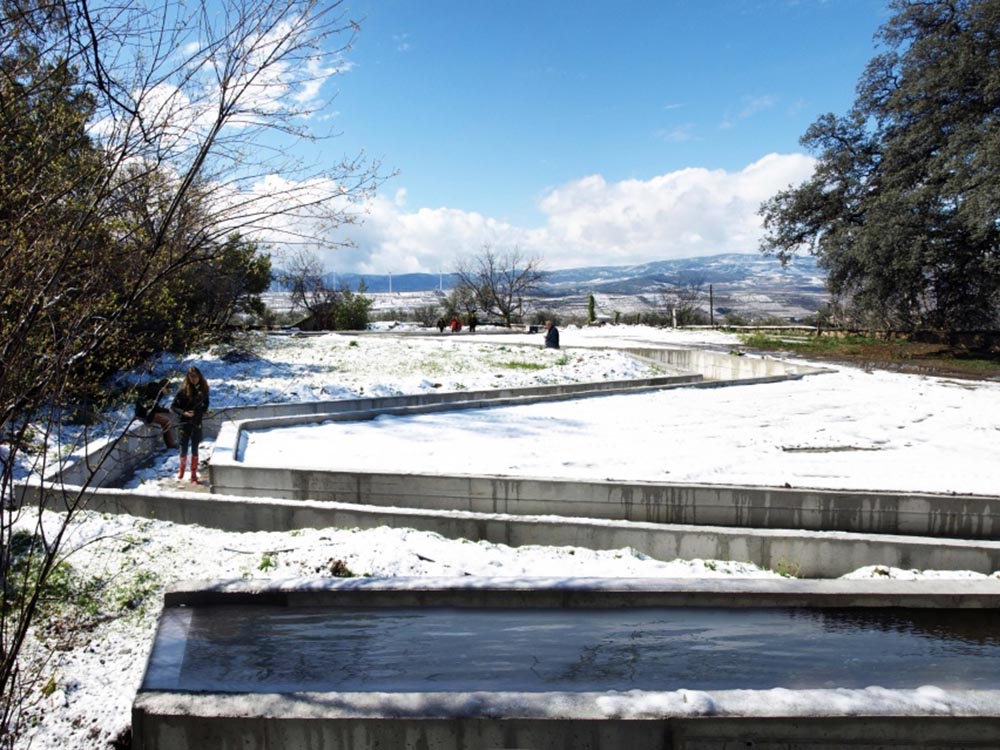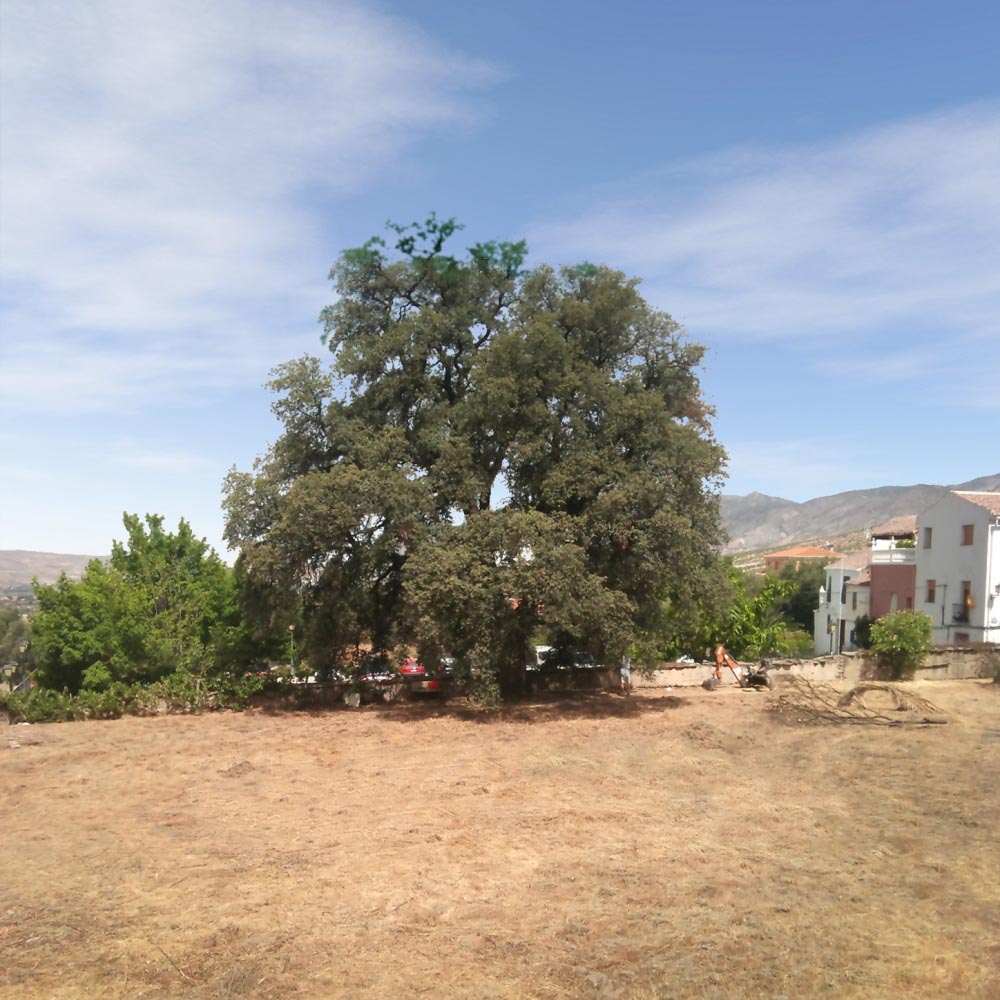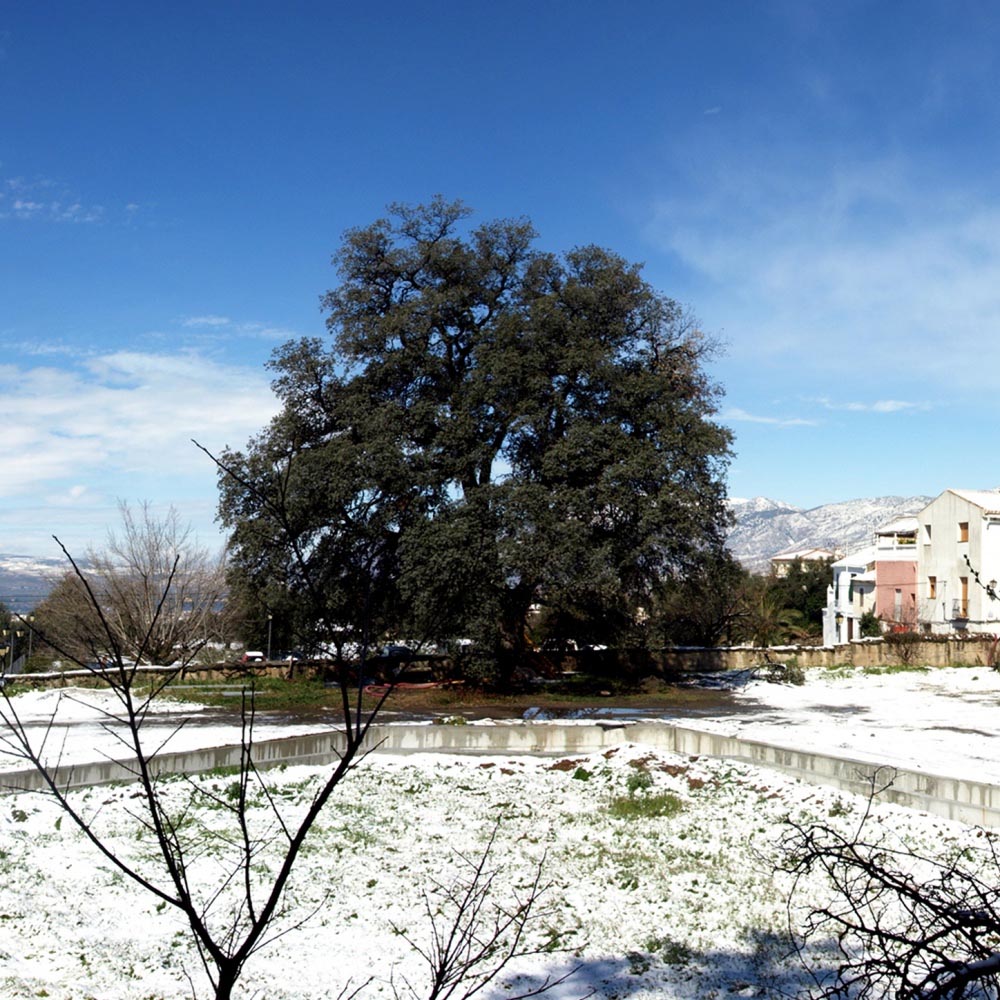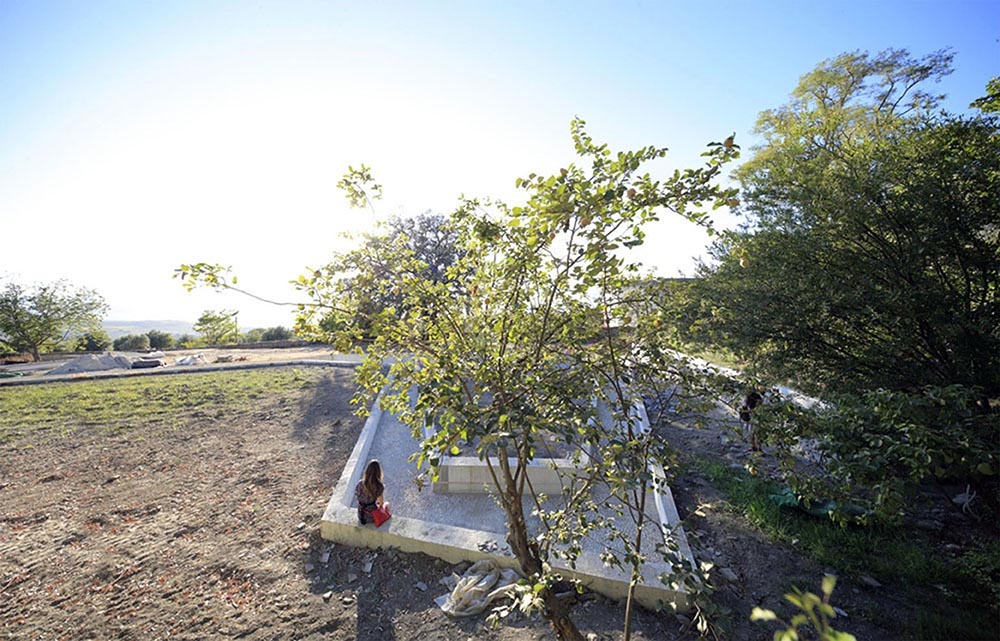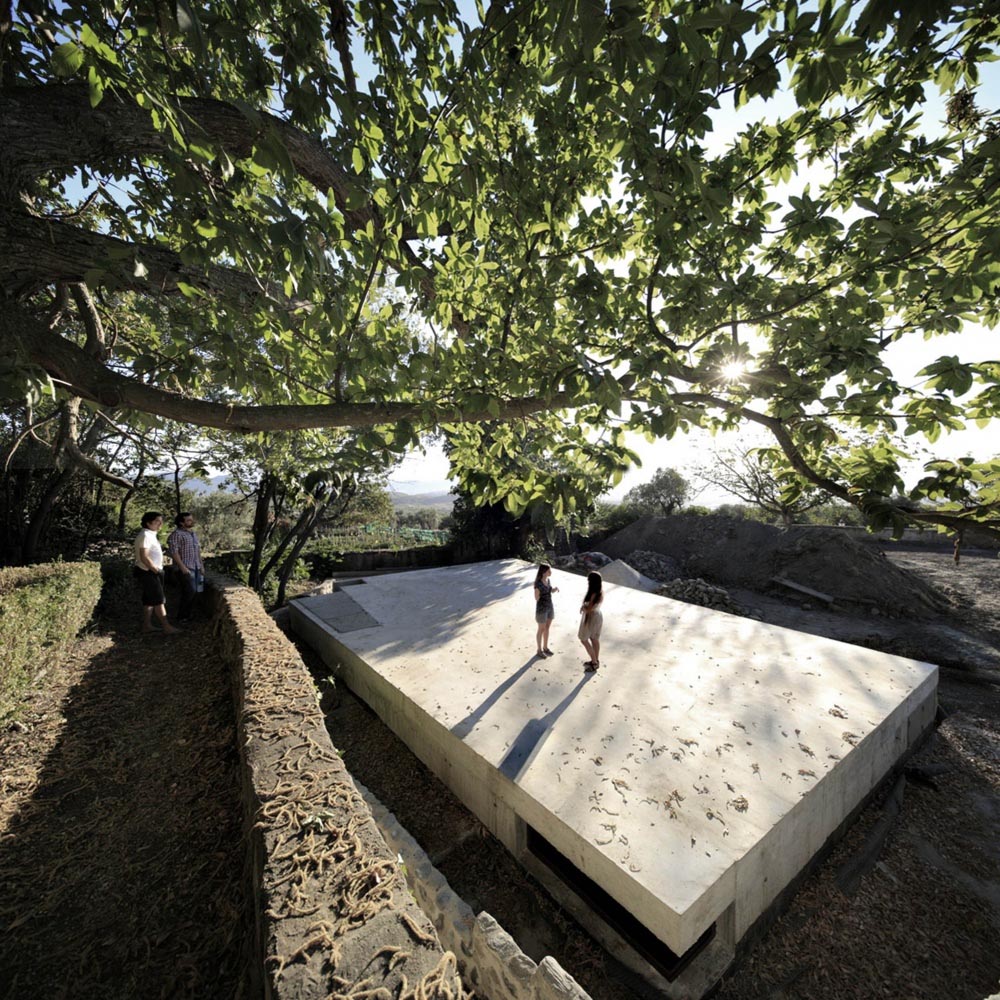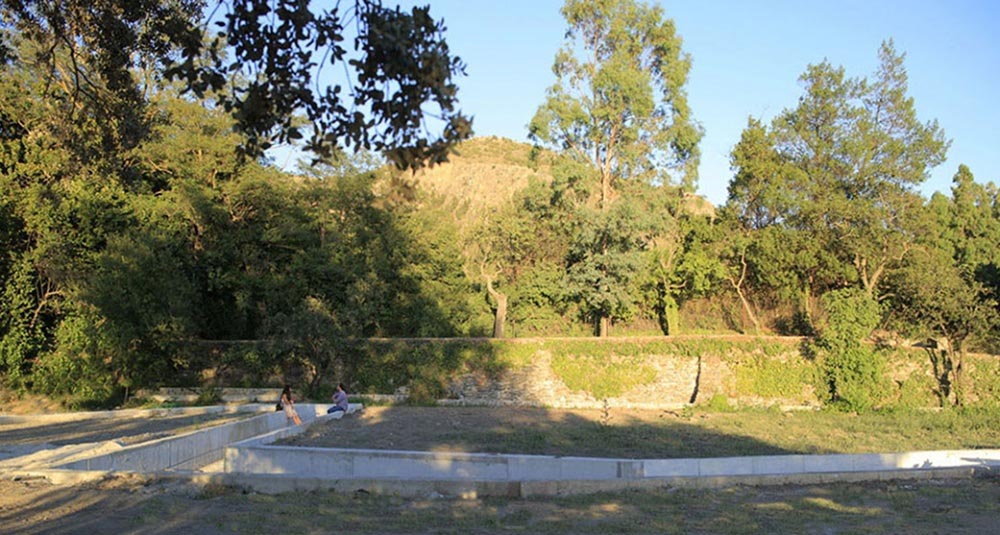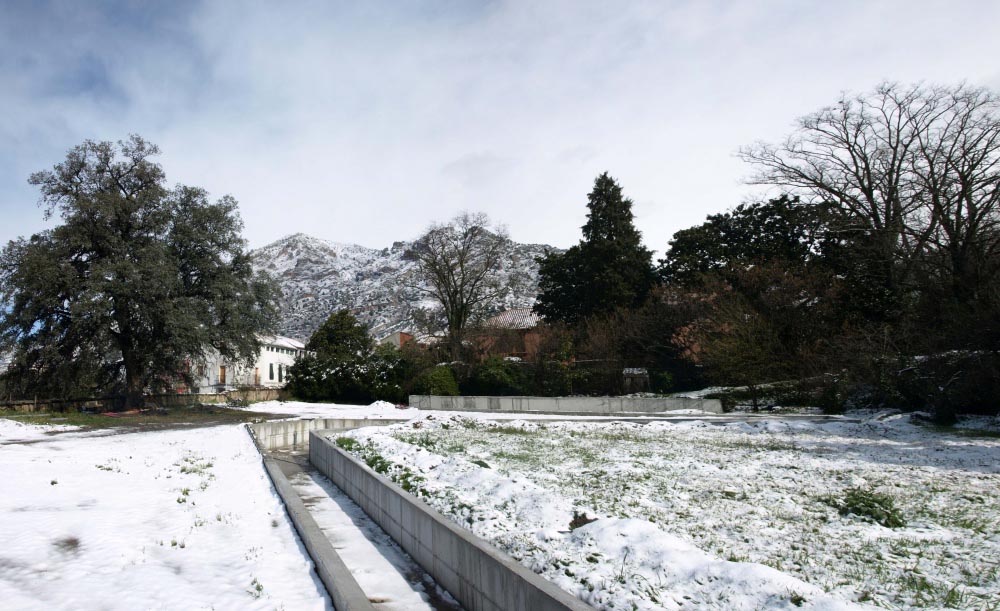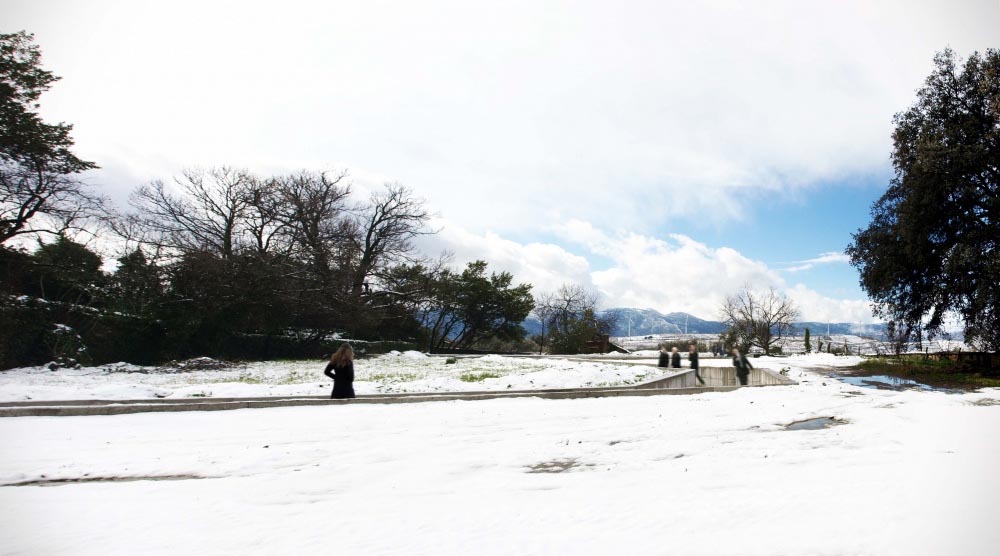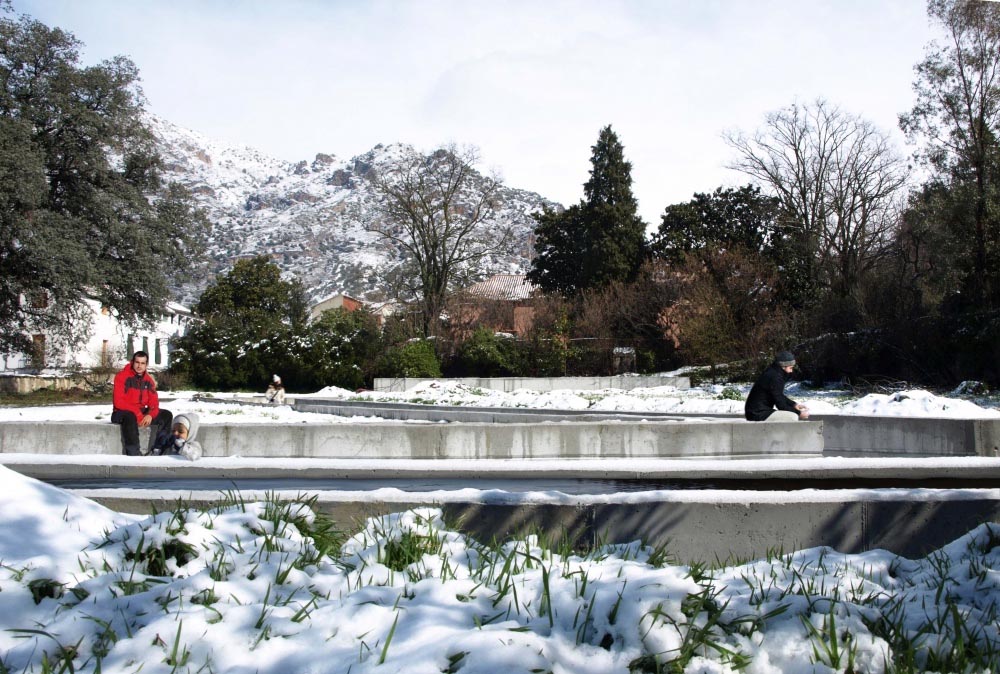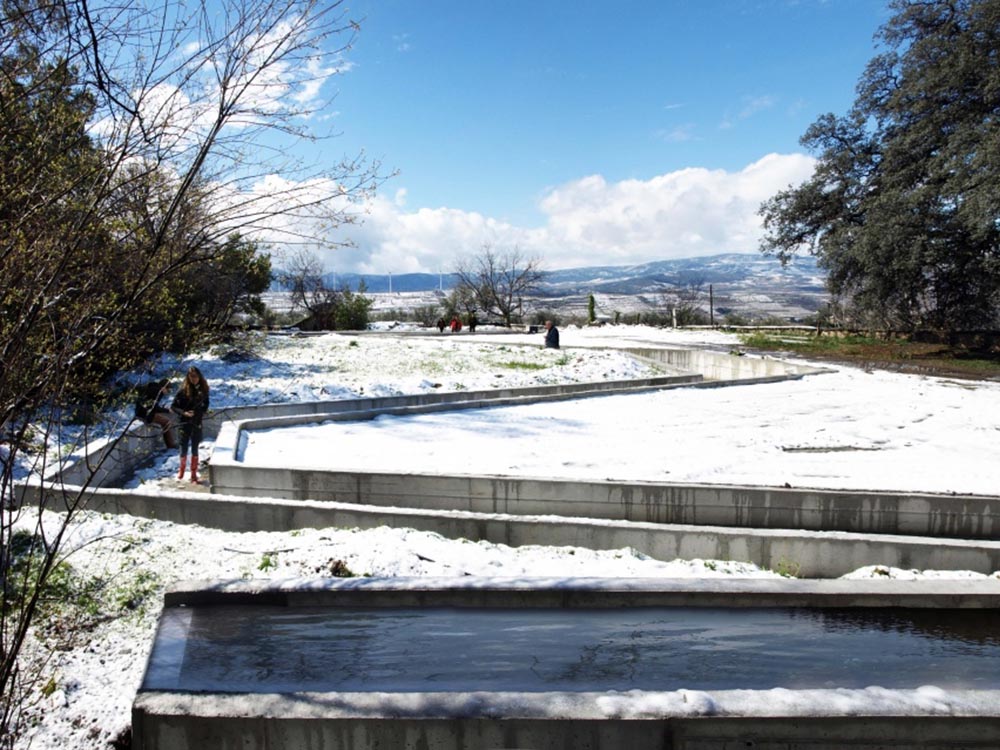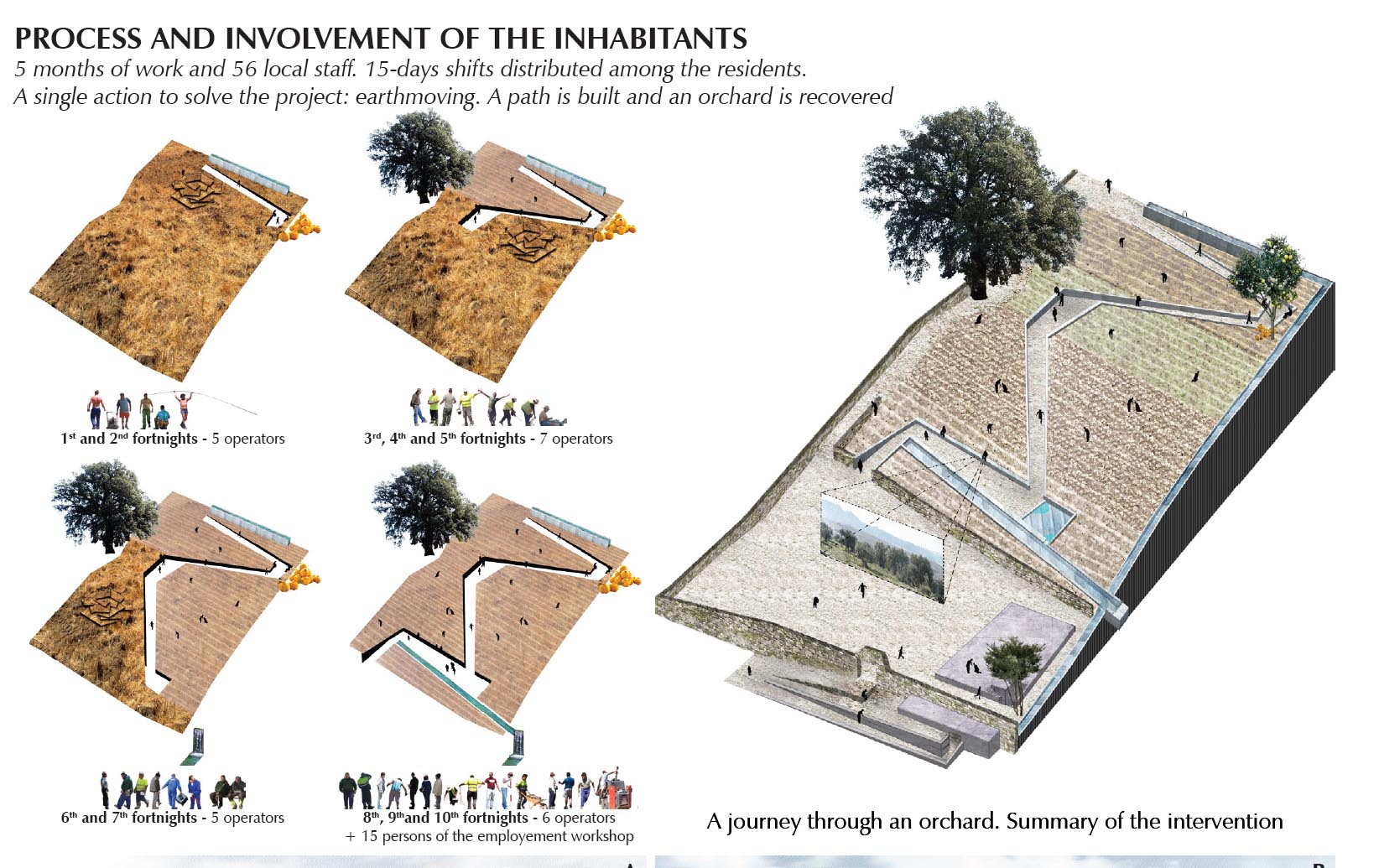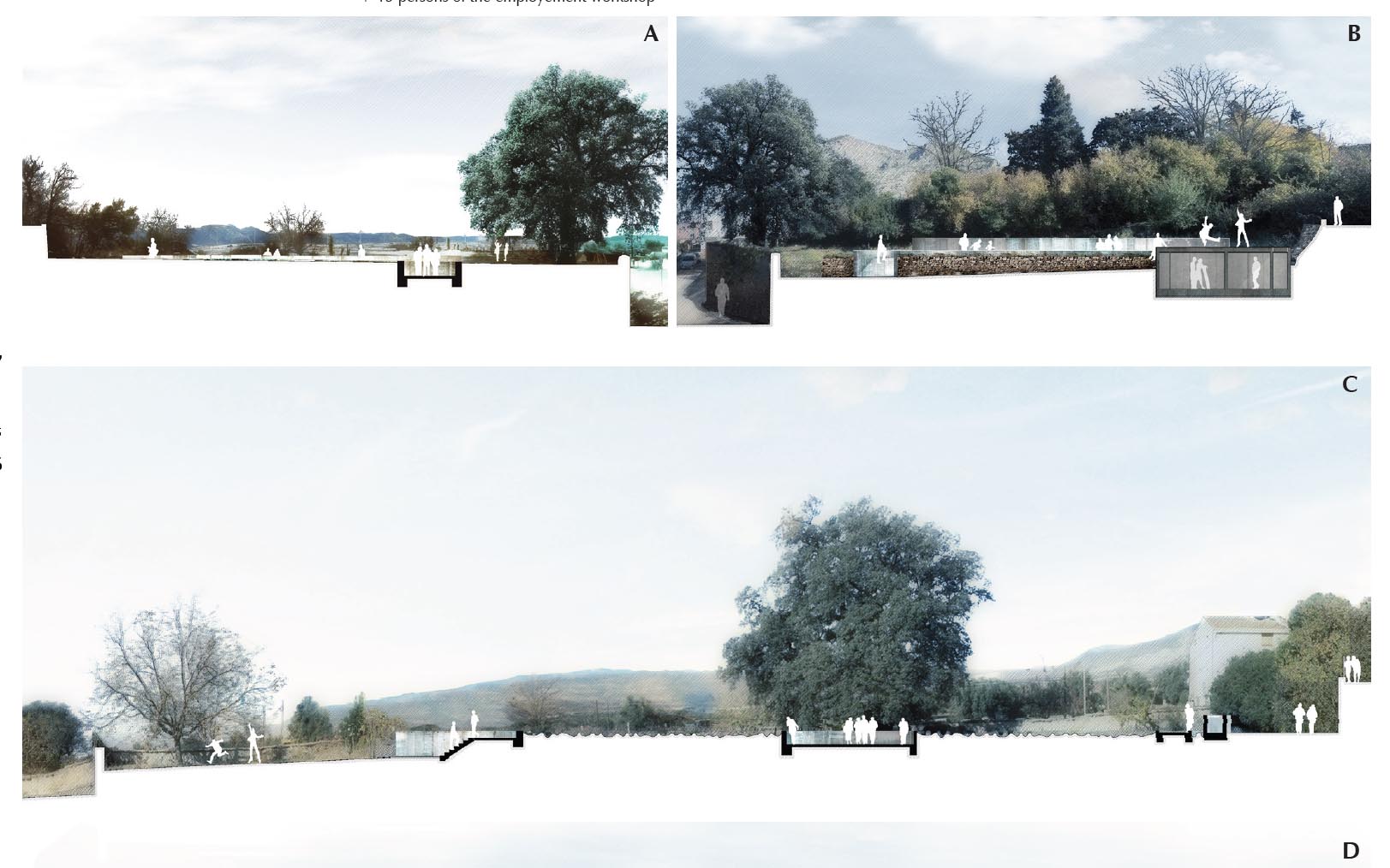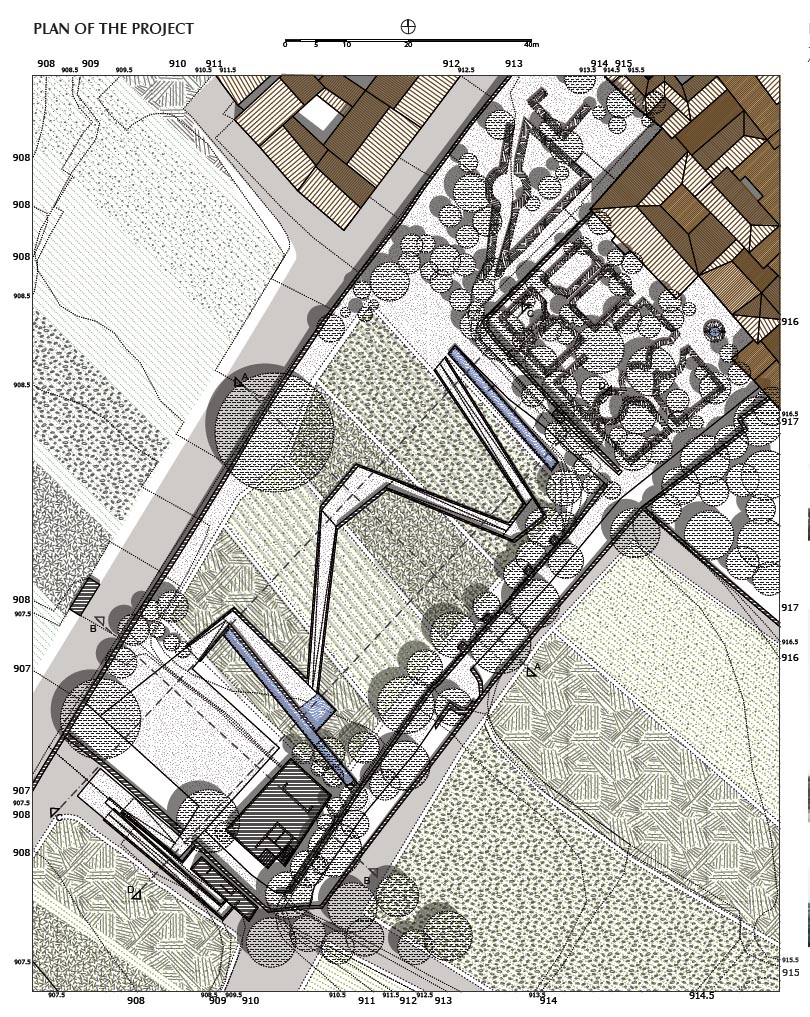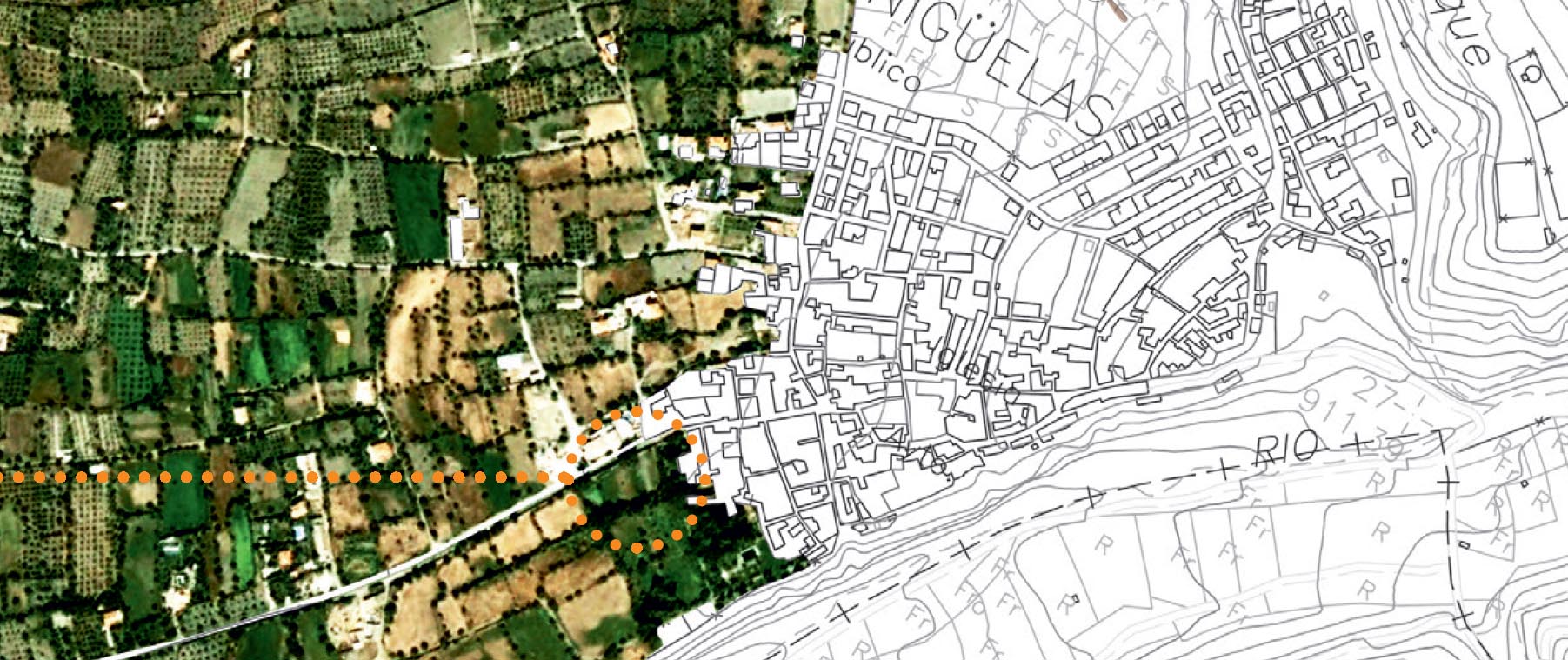Previous state
For centuries, the Pavilla irrigation channel has collected the water trickling down from the perennial snow of the Sierra Nevada. Its water runs throughNigüelas, a town on the mountain slope, where it powers mills, waters crops and, more recently, generates some of the electricity consumed by the population of just over a thousand people. After crossing the centre of town, through the main square itself, it reaches a communal orchard which borders the town’s cultivated land.With a gently sloping surface and an area of just over three thousand square metres, the orchard has good views of the surrounding landscape. Many of the town’s present residents, including the mayor, have childhood memories of this space which still has the pools where they used to bathe, the oak trees that gave shade and quince trees they hid in while their fathers and grandfathers ploughed the land. Until 2013 the town, which is poor, with a high unemployment rate and dwindling population, had neglected this emblematic space. Fortunately, however, it is still municipal property.
Aim of the intervention
In 2013 the Nigüelas town council saw a twofold opportunity in restoring the orchard’s productive function. First, it was a way of retrieving the lost memory of a place which had been so representative for the town. Second, the project could help in combatting the unemployment which is afflicting the population. The budget had to be low as little money – just under fifty thousand euros – was available and it was decided to use it for contracting local workers only. After five months’ work, a total of fifty-six residents worked on the project in a series of two-week shifts.Description
Throughout this period, the area remained open so that local residents could go and check the state of work and express their views. Some were interviewed in order to obtain a more detailed account of the values the community orchard concealed. Most of the work carried out consisted in excavating a semi-sunken track zigzagging from the highest point of the orchard next to the town down to the lowest level. The fact that the path is slightly below ground level brings the ploughed land closer to the eye of the viewer while the retaining walls protect it and mark the way.At the highest part of the track there is an elongated irrigation pool with cement walls. This collects water from the Pavilla irrigation channel, which only flows out once a week. At the lower end of the orchard, the path opens on to an esplanade which, in summer, is a venue for open-air concerts and film screenings. A backdrop is provided by a cluster of fig trees, chestnut trees and an old olive tree which, like the rest of the pre-existing trees, are still standing. The stage consists of a slightly raised concrete platform, which also covers underground storage room.
Assessment
Now that the work has finished, this collectively managed orchard is used as an educational space by the local school, as a productive asset by a workshop catering for employment needs, as a meeting place for residents on special occasions, and as a garden outside the town offering repose and good views. Thanks to this array of functions, which fill it with life, the orchard has left behind its days of neglect and recovered its role as a community space, one which also serves as a reminder that the concept of the common good is deeply rooted in ancient communal crops.David Bravo
[Translation: Julie Wark]
[Last update: 18/06/2018]


